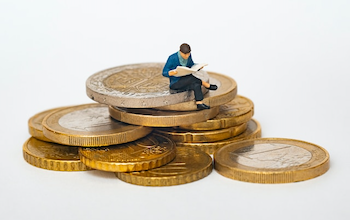
Tipping can be a tricky ritual to master especially when dining out. While it’s important to show your appreciation for good service, the amount and approach can sometimes be a cause of confusion. Keeping up with mindful tipping etiquette can be an intimidating task, but this guide provides helpful tips to ensure you are giving your server the proper gratuity all while staying informed.
Going out to eat is an opportunity to enjoy a delicious meal, catch up with friends, and yes, show your gratitude to your server with a tip. Understanding the ins and outs of proper tipping etiquette begins with having an understanding of why it’s important to tip. Tipping is a common practice to make sure your server is rewarded for their hard work and dedication. It’s one of the few ways people in the service industry are able to make a living wage.
Typical dining etiquette suggests that when you are being served a meal in a restaurant, you should tip 15-20% to your server. This applies to both sit-down restaurants and buffet-style restaurants. Tipping is a way for customers to say thank you to the server for providing quick and courteous service. Servers should always be tipped on the pre-tax amount due to the fact that taxes are not considered a part of the service.
For drinks at a bar or pub, you should tip between $1 and $2 per drink you consume, depending on the quality of the drink. It is also a good idea to tip more for more complicated drinks that require extra skill or extra ingredients. For instance, if you are ordering a complex whiskey–based cocktail, you may want to tip a little more than you typically would.
When ordering food for delivery, it is customary to tip the delivery person as they have taken on the responsibility to bring the food to your door. It is advised to tip around 15-20% of your total bill, depending on the complexity of the order, and likely more if you live in an area with poor weather conditions or a long distance to travel.
When picking up food at a take-out location, you do not have to tip, as you are not being served by a waitstaff. However, you may wish to tip a small amount if the person helping you is friendly, helpful, or gave you a discount or a free item.
When taking a taxi or ride in an Uber, it is common to tip the driver around 10-20%, depending on the level of service. A good rule of thumb is to tip more for taking extra precautions, such as a driver who gets you home quickly in inclement weather or takes extra time to take a scenic route.
Tipping for hairdressers and barbers is also a common practice and is expected when happy with the service. It is customary to tip between 15-20%, and the amount may be higher for special services, such as coloring, highlights, or a cut with extra styling.
Valet service is becoming more and more common and can be expensive. Tipping is usually expected when using this type of service, but the amount may vary. The general tipping guideline is to provide them with a tip of a few dollars for bringing your car around, with larger tips being offered for valets that take extra care of your car.
Overall, tipping should always be used when appreciating a service you receive from someone else. Doing so is a way to show people that you value the type of service they provide and appreciate their hard work. The amount you should tip is not strictly regulated, but varies depending on the type of service and whether or not you are satisfied with the service. In some cases, such as taxi drivers or hairdressers, it is customary to tip at least 15-20%. In others, such as food delivery or wait staff, it is advised to tip 15-20%. When in doubt, tipping is always appreciated and a polite gesture to show your gratitude.